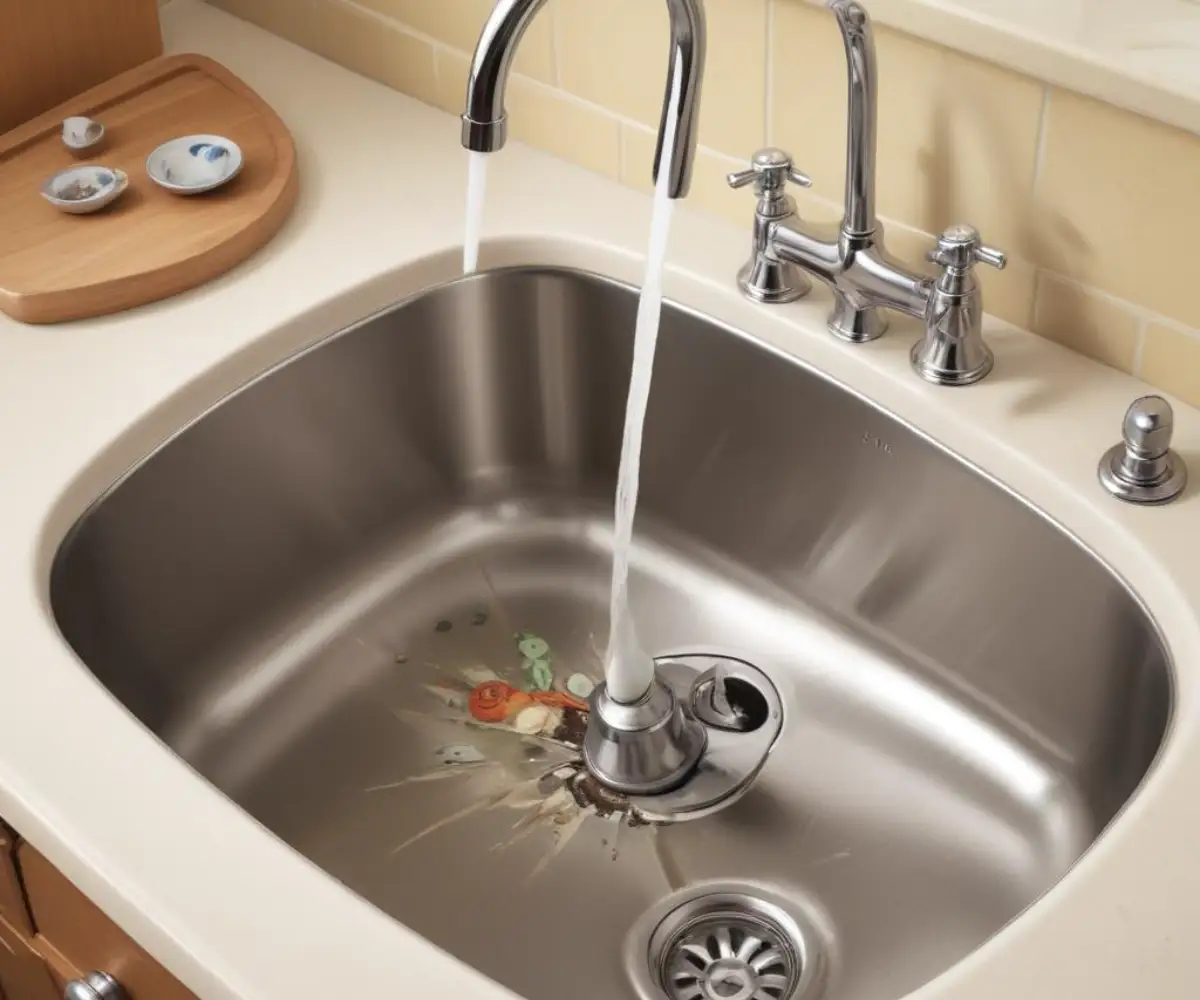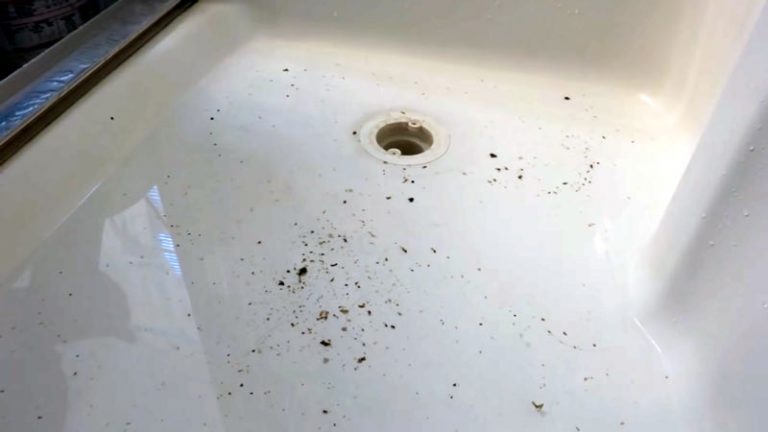Why Did My Kitchen Faucet Spout Come Off Suddenly? Don’t Panic! Here’s the Fix
It’s a frustrating and all-too-common moment. You go to swivel your kitchen faucet to rinse a dish, and suddenly the entire spout comes off in your hand. Your immediate thoughts likely jump to expensive plumbing bills and the hassle of a major repair. But don’t panic—in most cases, a detached kitchen faucet spout is a problem you can fix yourself with a few simple tools and a little bit of know-how.
This guide will walk you through why this happens, how to diagnose the specific cause, and the step-by-step process to get your faucet back in working order. We’ll empower you to tackle this common household issue like a pro, saving you time and money.
You'll Learn About
Why Your Kitchen Faucet Spout Detached: Common Culprits
Before you can fix the problem, it helps to understand why your faucet spout came off in the first place. The constant swiveling and daily use put stress on its components. Over time, this wear and tear can lead to failure. Here are the most common reasons your spout has separated from the faucet body.
Worn-Out O-Rings: The #1 Cause
By far, the most frequent cause of a detached or leaky faucet spout is the failure of its O-rings. These are small rubber rings that sit in grooves on the faucet body, creating a watertight seal and allowing the spout to rotate smoothly. Over years of use, these O-rings degrade, stretch, or become brittle from mineral buildup, eventually failing to hold the spout securely.
If your spout felt loose or was leaking around the base before it came off, worn O-rings are almost certainly the culprit. This is the best-case scenario, as it’s the easiest and cheapest problem to fix.
Loose Retaining Nut or Screw
Many faucet spouts are held in place by a retaining nut, collar, or a small set screw located at the base of the spout. The constant rotational movement of the spout can cause this fastener to gradually loosen over time. Once it becomes loose enough, the spout can easily be pulled off its base.
This is another relatively simple fix that just requires tightening the component. However, accessing it can sometimes be tricky depending on the faucet’s design.
Corrosion and Mineral Buildup
Hard water is a common enemy of plumbing fixtures. Over the years, mineral deposits (limescale) can build up inside the faucet body and around the spout connection. This buildup can interfere with the O-rings’ ability to seal properly and can also cause parts to seize up or corrode.
In severe cases, corrosion can weaken the metal components of the spout or faucet body, leading to a catastrophic failure where the spout breaks off. Significant corrosion often means a replacement is necessary.
Cracked or Broken Spout Base
While less common, it’s possible for the base of the spout itself to develop a crack. This can happen from a manufacturing defect, accidental impact, or excessive force being applied to the spout. If you inspect the detached spout and see a clean break or crack in the metal or plastic base, a simple repair is not possible.
A cracked spout base compromises the structural integrity of the faucet, and the only safe and effective solution is to replace the entire faucet unit.
Your Step-by-Step Guide to Fixing a Detached Faucet Spout
Now that you understand the potential causes, it’s time to roll up your sleeves and get to the repair. Follow these steps carefully for a successful and leak-free outcome. Safety first: always turn off the water supply to the faucet using the shutoff valves under the sink before you begin.
Step 1: Assess the Damage and Gather Your Tools
First, carefully inspect the end of the detached spout and the faucet body it connects to. Look for any visible cracks, severe corrosion, or broken pieces. This initial assessment will confirm whether you’re dealing with a simple O-ring issue or a more serious problem that requires a full replacement.
Next, gather your tools. You won’t need much, but having the right items on hand will make the job much smoother. You’ll likely need:
- A set of new, correctly sized O-rings
- An Allen wrench or hex key set
- A small flathead screwdriver
- Adjustable pliers or a basin wrench
- Silicone-based plumber’s grease
- Old towels or rags
- White vinegar and a small brush for cleaning
Having a versatile set of tools is always a plus for any home repair. Sometimes, a job requires a more specific tool, and it’s helpful to understand the difference between a nut driver vs socket to ensure you have what you need.
Step 2: Remove Any Remaining Spout Connections
If the spout came off completely, you can skip this step. However, if it’s just very loose, you’ll need to remove it properly. Look for a small set screw at the very back of the spout base. If you find one, use the appropriate Allen wrench to loosen it, and the spout should lift right off.
If there’s no set screw, your spout is likely held on by a threaded collar nut at its base. You may be able to unscrew this by hand. If it’s too tight, wrap a towel around it to protect the finish and use pliers to gently turn it counter-clockwise until it’s loose enough to remove.

Step 3: Cleaning and Replacing the O-Rings
With the spout removed, you will see the O-rings sitting on the faucet body. Use a small flathead screwdriver to carefully pry the old, worn-out O-rings off. Take care not to scratch the surface of the faucet body. Once the old rings are off, it’s time to clean.
This is a critical step. Use a small brush and some white vinegar to scrub away any mineral deposits or grime from the O-ring grooves and the inside of the spout hub. A clean surface is essential for the new O-rings to create a perfect seal.
Once everything is clean and dry, take your new O-rings and apply a light coat of plumber’s grease. This helps them slide on without damage and creates a better, longer-lasting seal. Carefully slide the new O-rings into the grooves on the faucet body, ensuring they are seated properly and not twisted.
| Problem | Likely Cause | Solution |
|---|---|---|
| Spout is loose and leaking at the base. | Worn or degraded O-rings. | Replace the O-rings and apply plumber’s grease. |
| Spout wobbles but isn’t leaking. | Loose retaining nut or set screw. | Locate and tighten the appropriate fastener. |
| Spout came off and the metal base is cracked. | Physical damage or manufacturing defect. | The faucet must be replaced entirely. |
| Water sprays erratically from the connection when reattached. | Improperly seated O-ring or damaged diverter valve. | Remove spout, check O-ring placement, and inspect internal diverter. |
Step 4: Reinstalling the Spout
With the new O-rings in place, you’re ready to reassemble. Apply a thin layer of plumber’s grease to the inside surface of the spout hub. This will help it slide over the new O-rings without catching or tearing them.
Firmly press the spout down onto the faucet body with a slight twisting motion until it sits flush. If you removed a retaining nut or collar, screw it back on, hand-tightening first and then giving it a gentle quarter-turn with pliers if needed. If you have a set screw, tighten it snugly but do not overtighten.
Finally, turn the water supply valves back on and test your work. Turn the faucet on and swivel the spout back and forth, checking carefully for any leaks around the base. If it’s dry and the spout rotates smoothly, you have successfully completed the repair.
When to Repair vs. When to Replace Your Kitchen Faucet
A successful O-ring replacement can give your faucet many more years of life. However, there are times when a repair isn’t the most practical or cost-effective solution. If your faucet is constantly needing repairs, is severely corroded, or has a cracked component, it’s time to consider a replacement.
Investing in a new, high-quality faucet can save you from future headaches and potentially costly water damage. It’s also an opportunity to upgrade the style and functionality of your kitchen. Many modern faucets offer features like improved water efficiency and pull-down sprayers that can make daily tasks easier.
Is Investing in a Quality Faucet Worth It?
When faced with a replacement, many homeowners wonder if splurging on a premium brand is a wise choice. It’s a valid question, as the price difference can be significant. To get a better understanding of the value proposition, it’s worth exploring the debate on is Kohler worth the money, as brand reputation often correlates with durability and parts availability.
Sometimes, you can find excellent deals on top-tier brands at major retailers, which can make the decision easier. If you’ve ever wondered why is Kohler cheaper at Home Depot, it often comes down to volume purchasing agreements that benefit the consumer.
Pro-Tips for Preventing Future Faucet Failures
Proper care can significantly extend the life of your kitchen faucet and prevent unexpected failures. Incorporate these simple habits into your routine:
- Be Gentle: Avoid yanking or aggressively swiveling the faucet spout. Smooth, gentle motions put less stress on the O-rings and retaining components.
- Regular Cleaning: Periodically wipe down the base of the faucet to prevent the buildup of limescale and grime that can degrade the seals.
- Address Drips Immediately: A small leak at the base is an early warning sign that your O-rings are beginning to fail. Fixing it early prevents a bigger failure down the line.
- Check for Looseness: Every few months, gently check if the faucet base or spout feels wobbly. Tightening a loose nut early can prevent the spout from detaching.
By following these steps, you can confidently handle a detached kitchen faucet spout. What seems like a major plumbing disaster is often a simple, straightforward DIY fix that restores full function to one of the most important fixtures in your home.

